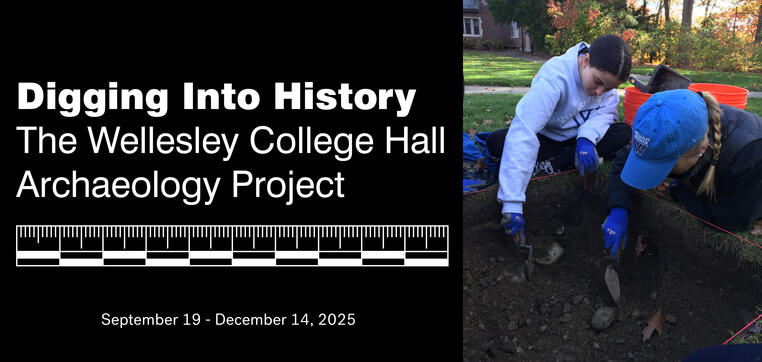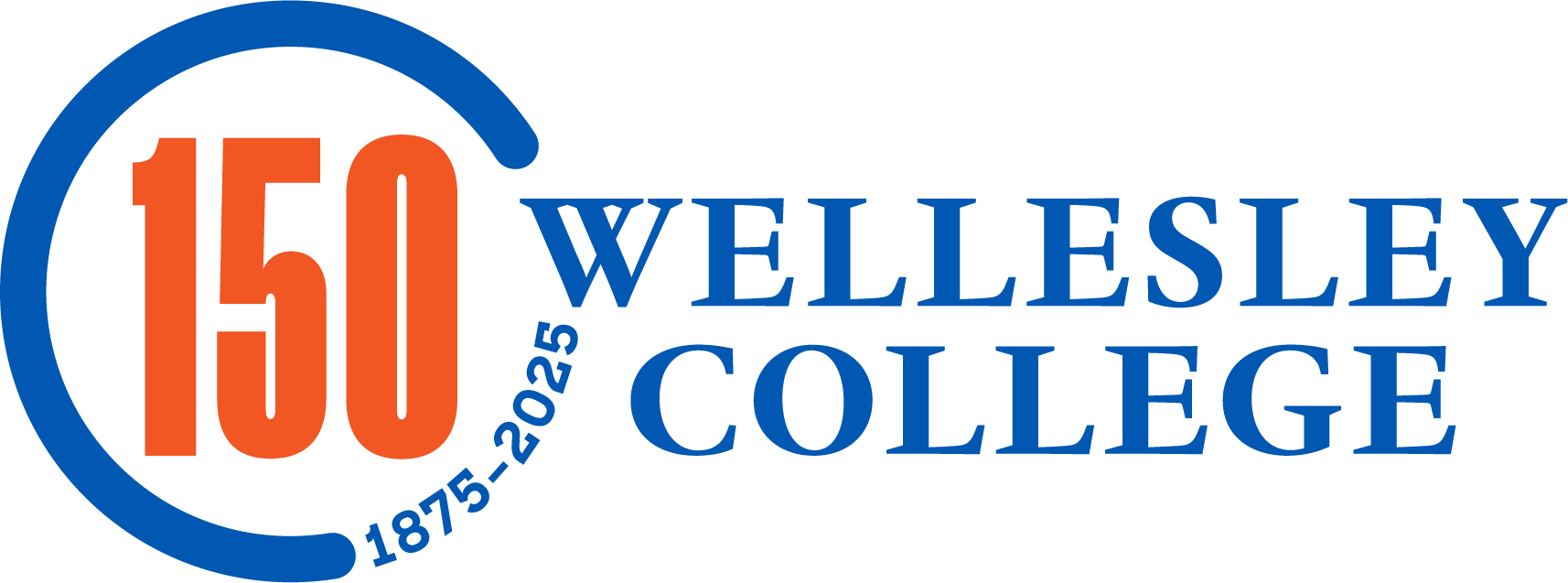The Davis Museum is closed for Wellesley College’s winter break. Please join us at our spring opening celebration on February 5, 2026, at 4 pm.

Alejandra Chaisson ’19 and Olivia Reckley ’18 excavate a unit near the staircase in Tower Courtyard. Photo courtesy of WCHAP.
Digging Into History: The Wellesley College Hall Archaeology Project (WCHAP) explores the rich legacy of College Hall—the iconic building that once stood at the heart of Wellesley College—through a community-based excavation led by former Wellesley faculty member Dr. Elizabeth Minor ’03. Destroyed by fire in 1914, College Hall housed nearly every function of the College: dormitories, classrooms, laboratories, and cultural collections. Its loss was deeply felt, but its remains provided a powerful opportunity for rediscovery.
From 2017 to 2023, over 100 students and volunteers unearthed fragments of daily life—charred books, ceramics, architectural elements—that offered tangible connections to the lived experiences of early Wellesley students. These findings shed light on how College Hall fostered an immersive and interdisciplinary environment at the dawn of women's higher education.
WCHAP demonstrated the power of community-driven, participatory research, and experiential learning. It made archaeology accessible in Wellesley’s own backyard and addressed inequities in the field by centering local knowledge and inclusion. Digging Into History invites reflection on how the past informs our present—just as Wellesley marks its 150th anniversary by honoring an extraordinary history, looking toward an exciting future, and reaffirming its commitment to educating women who will make a difference in the world.
Digging Into History is co-curated by Dr. Nicole Berlin, Associate Curator of Collections, and Dr. Elizabeth Minor ’03, former Wellesley College Anthropology faculty member and current Assistant Professor at California State Polytechnic University, with contributions from Alejandra Chaisson ’19, Anjali Aralikar ’23, Anna Calderon ’23, Rebecca Darling, Assistant Director of Instructional Technology, Georgia Oppenheim ’20, Julz Vargas ’24, Juening Mao ’26, Kalei Oliver ’20, Kelly Giudice DS ’25, Mary Beth Timm, Interim Co-Director and Associate Director for Operations and Collections Management, McKenna Morris ’19, Megan Rodriguez-Hawkins ’25, Paola Favela ’19, and Rachel Tao ’19.
Thank you to additional WCHAP participants and supporters: Abby Jarcho ’26, Alex Cahn ’23, Allie Beighle ’26, Anastacia Markoe DS ’23, Anna Smith ’23, Ashley Bisram ’22, Ash He ’24, Audrey Ballarin ’23, Aylish Klepper ’21, Blythe Terry ’23, Caden Rijal ’23, Caylee Pallato ’20, Clara Ferrari ’20, Coco Plasencia ’24, Deyra Aguilar ’24, Eliene Wu ’20, Em Kramer ’23, Emma Ross ’24, Giulia Bronzi ’21, Ginnie Peery ’24, Jen Enriquez ’24, Josephine Kim ’20, Josie Kutcha ’23, Kadidia Keita ’24, Kate Hall ’22, Karen Mueller ’23, Kasey Cole ’25, Katharine Gavitt ’21, Kelly Navickas ’19, Kyra Deehr-Lewis ’23, Lara Kurtz ’26, Looghermine Claude ’20, Lulu Al Saud ’20, Mads Jackson ’24, Madeleine Bettencourt ’22, Madison Miller ’21, Marie Delahousse ’26, Maddie Moon ’23, Olivia Arthur ’23, Oladunni Oladipo ’22, Patricia Tao ’23, Rachel Beaton ’21, Sabina Unni ’19, Sarah Guise ’20, Sissi Chen ’26, Sophia DeCubellis ’23, Sophia Greenberg ’21, Sophie Wilson ’22, Sreyneang Loeurng ’24, and many more…
The WCHAP excavation was supported through generous funding from the Paulson Ecology of Place Initiative. This exhibition is generously supported by the E. Franklin Robbins Art Museum Fund and the Mellon Academic Programs Fund.
